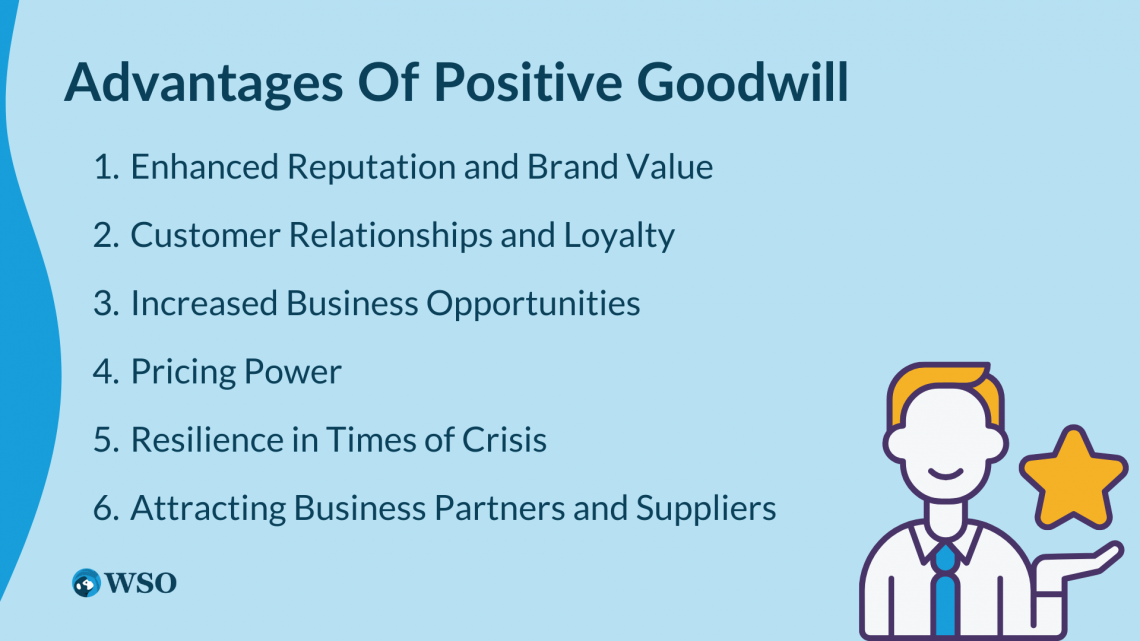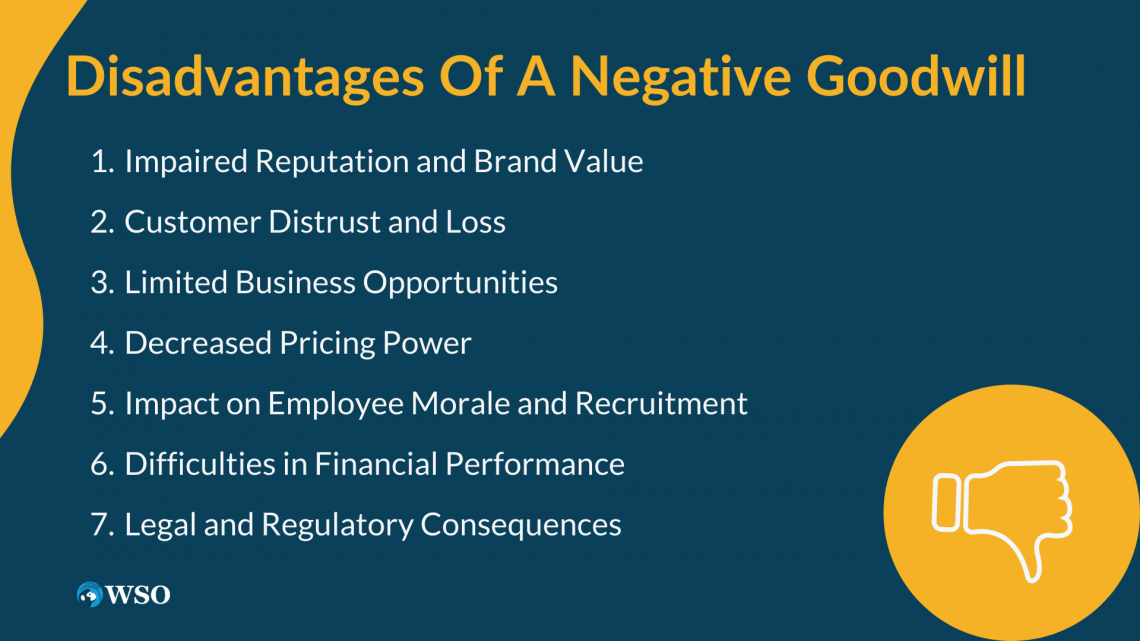
A vital accounting concept representing a business's intangible value beyond its identifiable assets and liabilities.

Ambitious Finance student pursuing MBA from St Joseph's Institute Of Management Studied previously at St Joseph's Indian High School wanting to pursue career in finance. Very logical and statistical school of thought in nature
Reviewed By: Parul Gupta
Goodwill is an intangible asset and is a vital accounting concept representing a business's intangible value beyond its identifiable assets and liabilities. It occurs when a company purchases another company at a price greater than the fair value of its net assets.

Essentially, goodwill reflects the worth of a company's reputation, customer connections, brand awareness, and other elements that contribute to its capacity to generate future profits. When a company buys another company, it pays an additional amount known as a premium.
This premium is recorded as Goodwill on the acquiring company's balance sheet . It is classified as an intangible asset and is subject to periodic impairment testing to determine if its value has decreased. It is not amortized like other intangible assets .
Impairment testing involves comparing the reporting unit's fair value, which may be a business segment or the entire company, to its carrying amount.
If the fair value is lower than the carrying amount, an impairment loss is recognized, reducing the value of the reporting unit on the balance sheet.
The accounting treatment of Goodwill has evolved over time. In the past, it was amortized over some time, typically up to 40 years.

However, this approach was criticized for not accurately reflecting its economic reality, as many companies showed consistent value beyond the amortization period. In response, accounting standards were revised, and now goodwill is no longer amortized but tested for impairment.
Impairment testing requires judgment and estimation. Companies must determine the appropriate reporting units for testing and estimate their fair value.
This process considers market conditions, industry trends, and other relevant factors. If an impairment loss is identified, it is recognized on the income statement , which reduces the company's reported earnings.

Goodwill plays a significant role in financial reporting and affects the financial statements of acquiring companies. It also impacts the balance sheet by increasing the company's total assets.
Moreover, it can have an impact on the income statement if an impairment loss is recognized. This recognition can result in lower reported earnings and a decrease in the company's overall financial performance .
From an investor's perspective, this intangible asset provides insights into an acquisition's strategic value. It represents the premium paid for synergies, competitive advantages, and growth potential.
Having positive Goodwill brings several advantages to a company. These are as follows.

It contributes to customer loyalty, trust, and favorable recommendations, resulting in higher sales and a larger market presence.
A strong brand value enhances the company's competitive position and distinguishes it from its competitors, creating a unique selling proposition. Customers prefer a brand with a favorable reputation, leading to increased revenues and long-term business expansion.
It signifies customers' trust and satisfaction in the company, leading to repeat purchases, referrals, and a stable customer base. Establishing and nurturing robust customer connections can offer a competitive edge and contribute to a business's enduring prosperity.
Companies with positive reputations are often presented with greater business opportunities. Their reputation and brand recognition attract potential customers, partners, investors, and employees.
It can lead to partnerships and collaborations with other reputable companies, expanding the company's reach and market presence. It can also attract potential investors more willing to invest in a company with a strong brand and positive market perception.
Top talent is often attracted to companies with a positive reputation, as they are perceived as desirable employers, leading to a larger pool of skilled candidates.
It can provide a company with pricing power in the marketplace. Customers who strongly prefer a brand due to its positive reputation might be inclined to pay extra for its products or services. This allows the company to command higher prices and achieve higher profit margins.
Companies with positive reputations are often more resilient in times of crisis or economic downturns. A strong brand and positive reputation can help companies survive difficult times by maintaining customer loyalty and trust.
Customers will likely stick with a trusted brand even during challenging periods. A positive reputation provides a cushion for companies, reducing the negative impact of external shocks and helping them recover faster.
It can attract business partners and suppliers who want to associate themselves with a reputable and successful company. Strong relationships with partners and suppliers can lead to better terms, improved service, and access to valuable resources.
Companies possessing positive reputations are frequently perceived as dependable and trustworthy collaborators, simplifying the process of establishing mutually advantageous partnerships.
Having negative goodwill can present several disadvantages and challenges for a company.

It often reflects a tarnished reputation and weakened brand value. It suggests that the company's brand image has been negatively affected, which can erode customer trust and loyalty.
A damaged reputation can decrease sales, market share , and customer retention. Rebuilding a positive brand image and regaining customer confidence can be time-consuming and costly.
It can result in customer distrust and loss. Due to negative experiences or unfavorable public perception, customers may perceive the company as unreliable or untrustworthy. This can lead to customer churn and reduced sales, negatively impacting the company's revenue and profitability.
Regaining customer trust requires significant effort to address the issues that led to the negative reputation. This includes improved customer service, product quality, and communication.
Companies with negative reputations may face limitations in attracting new business opportunities. Potential customers, partners, and investors may hesitate to engage with a company with a poor reputation or negative market perception.
It can hinder growth prospects as it may deter strategic partnerships, collaborations, and investment opportunities. It becomes challenging to convince stakeholders to align themselves with a company that is viewed unfavorably.
It often weakens a company's pricing power in the marketplace. Customers may be less willing to pay premium prices for products or services associated with a negatively perceived brand.
This can lead to decreased profit margins and reduced revenue generation. Competitors can gain an advantage in pricing, making it difficult for the company to compete effectively with each other.
It can have a detrimental impact on employee morale and recruitment efforts. Skilled candidates may be less inclined to join a company with a damaged reputation, which can impact the company's ability to build a strong workforce.
Negative Goodwill can create a negative work environment, reducing productivity and employee retention challenges.
It can directly impact a company's financial performance . It may lead to decreased revenues, increased customer acquisition costs, and higher marketing expenses to repair the brand image.
Moreover, it can trigger impairment tests and potential asset write-downs, resulting in losses and reduced shareholder value . Due to the negative impact on its financial statements , the company may face challenges in meeting financial targets and attracting investment.
Sometimes, it can lead to legal and regulatory consequences. If the negative goodwill results from unethical practices or violations, the company may face investigations, fines, and legal penalties. Negative publicity and legal battles can further damage the company's reputation and brand image.
It requires proactive measures, strategic initiatives, and a long-term commitment to overcome the negative implications and restore positive ones.
In accounting, the titular concept refers to an intangible asset associated with acquiring one company by another, representing the value that can give the acquiring company a competitive advantage .

In essence, this intangible asset is the portion of the purchase price that exceeds the net fair value of the acquired company's assets and assumed liabilities.
It encompasses various elements, such as:
These factors contribute to the value one company may pay a premium for when acquiring another. (This is why companies value their reputation in the market, as it has associated costs.)
It also gives the company bargaining power based on its reputation in the market and helps it bargain with its suppliers or sell premiums to customers because of its reputation and recognition in the market.
The formula for it is given as follows:
Companies must assess goodwill value on their financial statements at least once a year. Unlike most other intangible assets with finite useful lives, it is considered to have an indefinite life.
This is an intangible asset that represents the excess amount that a company pays to acquire another company over the fair value of its net assets.
Goodwill is only recorded when a business combination occurs and one company purchases another company to become its subsidiary. It is not amortized, but it is periodically tested for impairment.
Here are some examples of journal entries on acquisition:

Let us take the first example:
Company A purchases Company B for $250,000. The fair value of Company B’s net assets (assets - liabilities) is $209,000. The journal entry for Company A to record the acquisition is:
| Account | Debit | Credit |
|---|---|---|
| Asset | $209,000 | |
| Goodwill | $41,000 | |
| Cash | $250,00 |
Goodwill is calculated as the purchase price ($250,000) minus the fair value of net assets ($209,000).
To understand better, let us take a look at example 2:
Company X pays $7,000,000 to purchase 100% shares in Company Y, which was originally its supplier. The fair value of Company Y’s net assets is $6,500,000. The journal entry for Company X to record the acquisition is:
| Amount | Debit | Credit |
|---|---|---|
| Assets | $6,500,000 | |
| Goodwill | $500,000 | |
| Cash | $7,000,000 |
The amount of goodwill is calculated as the purchase price ($7,000,000) minus the fair value of net assets ($6,500,000).
This intangible asset is primarily relevant in company acquisitions, where the amount paid by the acquiring company above the target company's net assets at fair value usually represents its value.
If the acquiring company pays less than the target's book value, it gains negative goodwill, indicating a bargain purchase in a distressed sale.
On the acquiring company's balance sheet , it is recorded as an intangible asset under the long-term assets category. This classification is because it is not a physical asset like buildings or equipment.
Depending on the purpose and scope of the model, different ways are available to account for it in financial modeling .

One common method is to use the acquisition method, which involves the following steps:
Test goodwill for impairment at least once a year and adjust it if necessary.
Another common method is to use the excess earnings method, which involves the following steps:
Goodwill, in the field of accounting, is an intangible asset recognized when a company is acquired as a going concern . It represents the premium the buyer pays in addition to the net value of the company's other assets.

It is often seen as the inherent ability of the company to attract and retain customers, which cannot be attributed to factors such as brand recognition or specific contractual arrangements.
It can only be recognized through acquisition and cannot be created internally. It is classified as an intangible asset on the balance sheet because it cannot be physically seen or touched.
According to the US, Goodwill is treated differently under Generally Accepted Accounting Principles and International Financial Reporting Standards in terms of amortization. GAAP and IFRS do not require the amortization of goodwill since it is considered an indefinite useful life.
In the US, some business firms have the option to amortize. It is over a period of up to ten years or less. This option is granted through an accounting alternative introduced by the Private Company Council of the Financial Accounting Standards Board (FASB).

Instead of amortization, management is responsible for annually evaluating the value of this intangible asset and determining whether impairment is necessary. When the fair market value of goodwill drops below its historical cost , an impairment must be recognized and adjusted to its fair market value.
The financial statements do not reflect any rise in the fair market value of the intangible asset. The concept of commercial goodwill emerged alongside the development of capitalist economies.
In England, contracts from the 15th century onward referred to the purchase and transfer of goodwill, which denoted the ongoing business rather than the transfer of physical business assets.
Initially, such agreements were unenforceable due to the restraint of trade doctrine, which stated that one could not claim ownership of the business activity.